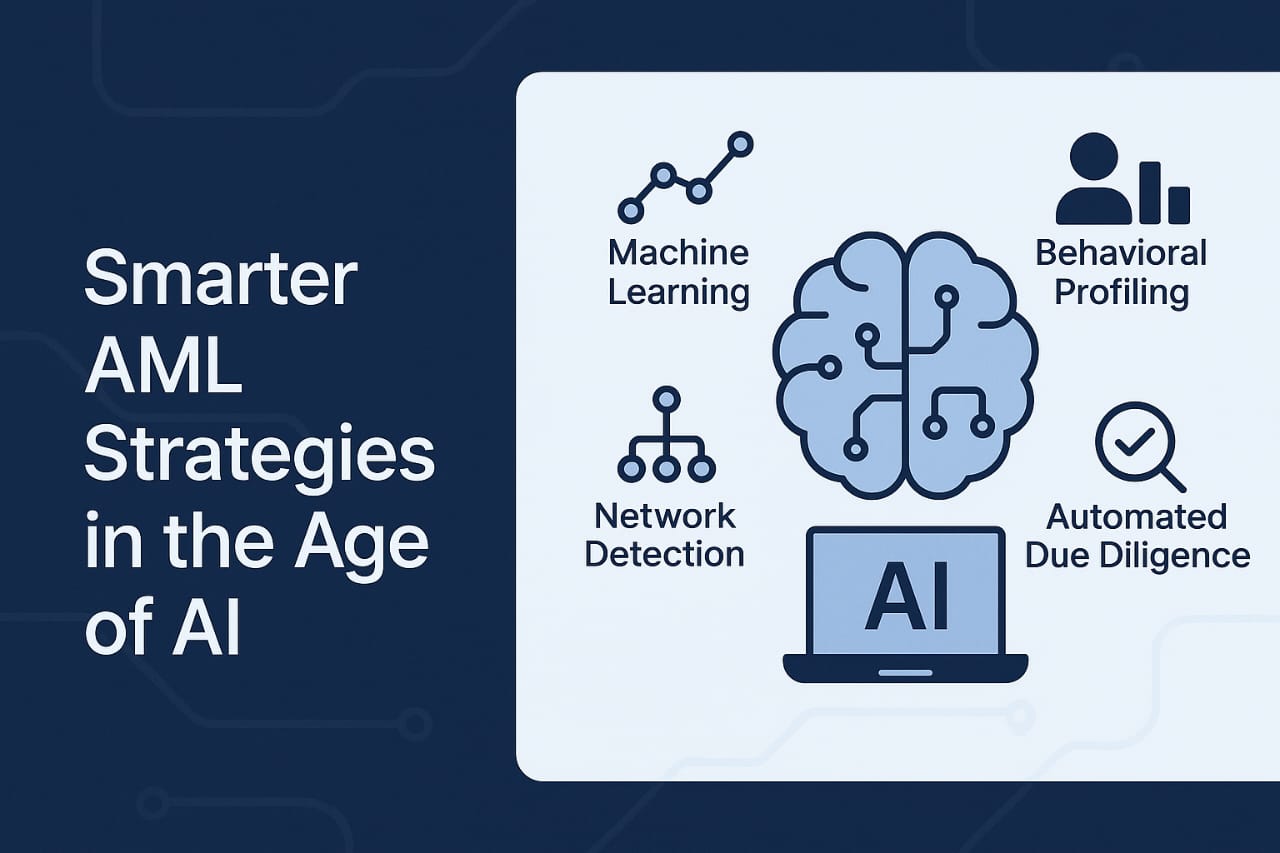Financial crime is advancing faster than many compliance systems can adapt. The rapid shift toward digital banking, real-time payments, and borderless transactions has opened new opportunities for money launderers and fraudsters. By 2025, global cybercrime damages are projected to exceed $10.5 trillion annually, highlighting how technology is both an asset and a vulnerability for financial institutions.
Traditional Anti-Money Laundering (AML) programs, built on static rules and manual review, are now too slow and fragmented to detect these threats effectively. That’s why a new generation of AI-powered AML compliance solutions is emerging, offering speed, precision, and scalability that human teams alone can’t achieve.
Why Traditional AML Systems Struggle
Even well-funded institutions face challenges keeping up with regulatory pressure and criminal innovation. Common pain points include:
- High false positive rates. Between 90 and 95 percent of AML alerts are false positives, overwhelming analysts with low-risk cases.
- Fragmented data. Disconnected systems make it difficult to identify hidden links between accounts or entities across jurisdictions.
- Manual reviews. Labor-intensive investigations delay reporting and drain compliance budgets.
- Reactive approaches. Most legacy systems detect suspicious activity only after the fact, long after funds have moved.
This inefficiency comes at a cost. In 2022, global financial institutions faced nearly $5 billion in AML-related fines, according to Finbold data. These penalties often stem not from willful neglect but from outdated systems unable to meet today’s standards.
AI as the Catalyst for Change
Artificial Intelligence is no longer a future concept for compliance, it’s a necessity. AI models can process millions of transactions in real time, identify subtle anomalies, and adapt as new criminal tactics emerge.
Here’s how AI reshapes AML compliance:
1. Precision Through Machine Learning
AI learns from historical data to recognize patterns that indicate risk. This dynamic approach reduces false positives while catching complex laundering networks that static rules might miss.
2. Entity Resolution and Network Detection
AI visualizes relationships between accounts, directors, and shell entities to uncover hidden ownership structures. This capability is crucial for detecting layering schemes used in large-scale money laundering.
3. Behavioral Profiling
Instead of relying solely on transaction thresholds, AI analyzes customer behavior over time. A sudden deviation from normal activity can trigger real-time alerts tailored to each risk profile.
4. Automated Due Diligence
Natural language processing (NLP) tools scan news articles, court records, and sanctions lists to uncover reputational risks. This continuous monitoring supports enhanced due diligence for high-risk clients.
5. Scalable Global Compliance
AI systems adjust to multiple jurisdictions and regulatory frameworks, ensuring institutions remain compliant as they expand internationally.
These advantages not only streamline compliance operations but also strengthen a bank’s ability to detect and prevent financial crime before it escalates.
The Future of AML Lies in Intelligent Collaboration
The growing complexity of global finance demands both human insight and algorithmic intelligence. The best compliance programs now combine AI-driven analytics with experienced investigators who can interpret results, assess context, and make judgment calls that machines can’t.
AI’s role is to handle the scale, processing billions of transactions and surfacing meaningful alerts. Human oversight ensures ethical use, fairness, and accountability. Together, they create a model of intelligent compliance that evolves with risk.
Flagright, for example, explores this balance deeply in its feature on AI and the future of AML compliance. The article explains how integrating AI into transaction monitoring and case management systems helps institutions meet global AML standards while reducing compliance costs.
What Regulators Expect from AI-Driven Compliance
Regulators are increasingly open to AI solutions, provided they remain transparent and explainable. Financial authorities like the Financial Action Task Force (FATF) and FinCEN emphasize that AI should complement, not replace, sound risk management practices.
To meet these expectations, institutions must:
- Maintain clear documentation of how AI models make decisions.
- Conduct ongoing validation and tuning to prevent algorithmic bias.
- Ensure staff can interpret AI-driven findings and act on them responsibly.
Institutions that meet these expectations not only strengthen compliance but also position themselves as leaders in responsible innovation.
Data Integrity: The Foundation of AI Accuracy
Even the most advanced AI models depend on clean, consistent data. Poor data hygiene, duplicate entries, missing fields, or fragmented customer profiles, can undermine performance and create regulatory exposure.
Financial institutions are investing heavily in data unification projects that merge KYC, transaction, and sanctions data into single systems. These integrated datasets form the backbone of predictive analytics, allowing compliance teams to see the full picture of customer activity.
Building a Future-Ready AML Strategy
Adopting AI is not simply a matter of adding new software. It requires cultural change, leadership buy-in, and cross-department collaboration. Forward-thinking financial institutions are already taking these steps:
- Training compliance teams to interpret AI outputs and manage automated investigations.
- Partnering with RegTech firms to deploy modular AI systems that scale with business growth.
- Establishing feedback loops between human investigators and AI tools to refine accuracy.
- Auditing AI performance regularly to maintain trust with regulators and customers.
By aligning people, processes, and technology, institutions can transition from reactive compliance to proactive risk prevention.
A Smarter Path Forward
Financial crime will keep evolving, but so will the tools to combat it. Artificial Intelligence gives compliance teams the speed and insight needed to stay one step ahead. When supported by reliable data, clear governance, and trained professionals, AI becomes more than a tool, it becomes a strategic asset.
In the years ahead, institutions that invest in adaptive AML systems will not only reduce risk and cost but also strengthen customer trust and operational resilience. The key is not just adopting technology, but learning to use it intelligently.







